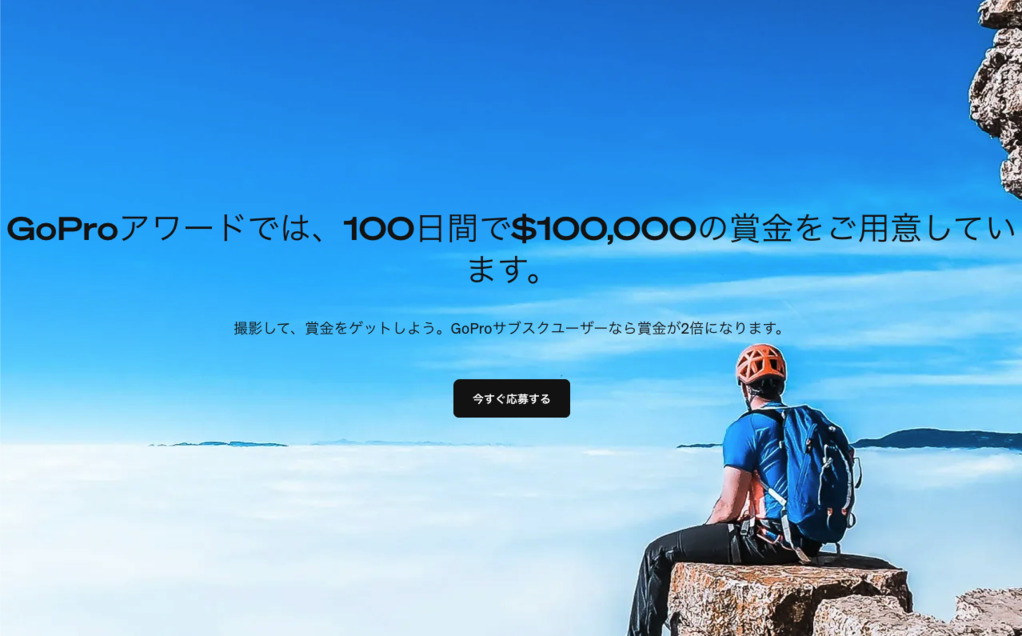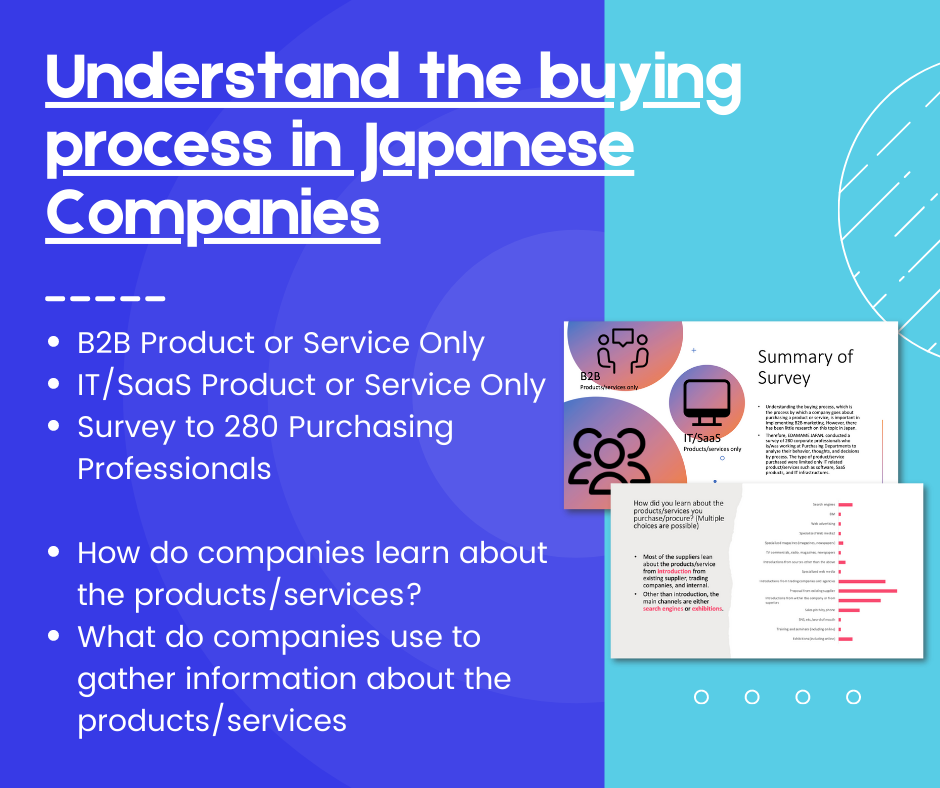A Non-Japanese Company’s Guide to Successful Content Marketing in Japan

Welcome to our in-depth guide on mastering content marketing in Japan as a non-Japanese company. If you want to penetrate the Japanese market with your digital content, understanding the distinctive cultural, consumer, and digital landscape is key. In this comprehensive guide, we’ll navigate the unique characteristics of the Japanese market, delve into successful content marketing strategies, draw lessons from real-world case studies, and take a glimpse into the future of content marketing in Japan.
Whether you’re a seasoned marketer or a business taking its first steps in Japan, this guide offers valuable insights and actionable strategies to help make your content marketing campaign successful. Let’s embark on this exciting journey!
- 1. Introduction to Content Marketing Japan
- 2. Understanding the Japanese Market
- 3. The Importance of Localization in Content Marketing
- 4. Key Differences in Content Marketing between Japan and the West
- 5. Top Content Marketing Strategies in Japan
- 6. Successful Case Studies of Non-Japanese Companies in Japan
- 7. Mastering Social Media Content in Japan
- 8. The Role of Influencers in Japanese Content Marketing
- 9. Creating Engaging Content for the Japanese Audience
- 10. The Future of Content Marketing in Japan
- Conclusion
1. Introduction to Content Marketing Japan
In an increasingly digital world, understanding and implementing effective marketing strategies is key to a business’s success. One such powerful tool at the disposal of companies is content marketing. But before we delve deeper, let’s first understand what this term means.
1.1 Definition of Content Marketing
Content Marketing is a strategic marketing approach focused on creating and distributing valuable, relevant, and consistent content to attract and retain a clearly defined audience. The ultimate goal is to drive profitable customer action. Unlike traditional marketing methods emphasizing direct sales pitches, content marketing involves providing useful information or entertaining content to customers, subtly encouraging purchase decisions, and building customer relationships.
1.2 Why Content Marketing is Crucial in Japan
In the context of Japan, content marketing plays a vital role due to the unique characteristics of the market. Japanese consumers are known for their high levels of digital literacy and discernment. They value detailed information, quality, and credibility, making them more receptive to the soft-selling approach of content marketing rather than overt advertising.
Furthermore, content marketing in Japan allows businesses to navigate the language and cultural nuances more effectively. It offers a way for companies, especially non-Japanese ones, to connect with their target audience deeper, build trust, and establish a strong brand presence. Therefore, mastering content marketing is paramount for any business aiming to make a mark in the Japanese market.
This blog post will delve into key aspects of implementing a successful content marketing strategy in Japan, offering insights on understanding the local market, the importance of localization, social media content mastery, and future trends in the Japanese content marketing landscape.
Here’s a table of some key reasons why content marketing is crucial in Japan and a brief explanation for each.
| Reason | Explanation |
| High Digital Literacy | Japanese consumers are highly digitally literate, often using multiple devices and platforms for various activities. Content marketing allows businesses to reach their target audience through these digital touchpoints. |
| Preference for Detailed Information | Japanese consumers appreciate detailed and comprehensive information about products or services. Content marketing provides a platform to deliver this level of depth, creating more informed and engaged consumers. |
| Cultural and Language Nuances | The Japanese market has unique cultural and language nuances. Content marketing allows businesses to tailor their message to resonate more effectively with the local audience. |
| Building Trust | Trust plays a critical role in the Japanese market. Quality content can help businesses build trust and credibility with their audience over time. |
| Brand Recognition and Loyalty | Consistent, high-quality content helps increase brand recognition and fosters customer loyalty. This is particularly beneficial in a market as competitive as Japan. |
| Search Engine Optimization (SEO) | Search engines in Japan, like Google and Yahoo! Japan, prioritize high-quality, relevant content. Good content marketing can improve a business’s search engine rankings, increasing visibility and attracting more potential customers. |
2. Understanding the Japanese Market
To implement a content marketing strategy in Japan successfully, a clear understanding of the unique dynamics of the Japanese market is essential. This section delves into some key characteristics that make the Japanese market distinct, as well as crucial aspects of Japanese consumer behavior that can inform an effective content marketing strategy.
2.1 Unique Characteristics of the Japanese Market
The Japanese market is distinct and complex, exhibiting traits unlike other markets worldwide. One such trait is the high value placed on quality and attention to detail. Japanese consumers appreciate finely crafted products and services, and this expectation extends to digital content as well. For content marketing to be effective in Japan, it should be well-researched, meticulously crafted, and deliver value to its audience.
Another distinctive aspect is the significance of tradition and respect for authority in Japanese society. In the context of content marketing, this translates into a preference for trustworthy sources and established brands. Start-ups and new entrants into the Japanese market can leverage content marketing to build credibility and foster trust with their target audience.
2.2 Understanding Japanese Consumer Behavior
Japanese consumer behavior further underscores the importance of content marketing. With a high level of digital engagement, the average Japanese consumer spends significant time online. This digital savviness means that consumers actively research products and services online before purchasing.
Additionally, Japanese consumers tend to be risk-averse and value certainty. Detailed, reliable content that provides comprehensive information about a product or service helps reduce perceived risk, facilitating the decision-making process. Personal stories, customer testimonials, and case studies can be particularly effective in this regard.
Moreover, the Japanese audience appreciates local language content that resonates with their culture and societal norms. Localization of content, therefore, is not just about language translation but also about cultural adaptation.
In summary, understanding the Japanese market’s unique characteristics and consumer behavior is instrumental in crafting a successful content marketing strategy in Japan. The following sections will delve further into how to create a tailored content marketing approach for this intriguing market.

Case Study: Apple’s iPhone Launch in Japan
When Apple first introduced the iPhone in Japan, the market was dominated by feature-packed flip phones. Japanese consumers were accustomed to using phones with many features, such as TV, music, and high-quality camera capabilities.
Understanding the Japanese consumers’ penchant for high-quality products and services, Apple focused its marketing on the iPhone’s quality and design superiority. They emphasized the smartphone’s seamless user experience, high-resolution screen, and high-quality camera that matched, if not exceeded, those in Japanese flip phones.
Moreover, Apple went a step further to appeal to the local market. They ensured the iPhone supported Japanese language input, including emojis, a concept born in Japan. Apple also worked with local carriers to offer competitive data and calling plans, making it easier for Japanese consumers to switch.
This story highlights the importance of understanding and adapting to the unique characteristics of Japanese consumer behavior to succeed in content marketing in Japan.
3. The Importance of Localization in Content Marketing
In the realm of content marketing in Japan, localization is not merely an option but a necessity. Being a homogeneous society with a unique language and cultural sensibilities, Japan is a market where localization can mean the difference between success and failure.
3.1 The Role of Localization in Japan
Localization in Japan goes beyond translating content to the Japanese language; it’s about adapting your content to fit the cultural, social, and consumer contexts of Japan. It’s about “speaking” to your audience in a language that resonates with their experiences, expectations, and values.
Japanese consumers appreciate content that reflects a deep understanding of their culture, lifestyle, and preferences. They are more likely to engage with brands that try to integrate and respect these aspects. This is why localization is a powerful tool for businesses seeking to connect with their audience and succeed in their content marketing efforts in Japan.
3.2 Cultural Sensitivity in Content Marketing
Cultural sensitivity is an essential element of effective localization in Japan. Japan has a distinct and rich culture steeped in tradition and societal norms that greatly influence consumer behavior and expectations.
For example, respect for authority and seniority is a deeply ingrained cultural norm in Japan. Therefore, content that acknowledges and aligns with this respect is more likely to resonate with Japanese consumers. Similarly, Japanese society values harmony and politeness, which can be reflected in the tone and style of your content.
Furthermore, understanding cultural nuances, such as important holidays, traditional customs, or popular trends, can help create content that feels more relevant and engaging to the Japanese audience.
In conclusion, the importance of localization and cultural sensitivity in content marketing in Japan cannot be overstated. They are key to creating content that truly connects with the audience, builds trust, and ultimately drives engagement and conversions.

Case Study: Starbucks in Japan
Starbucks’ understanding of Japan’s Cherry Blossom Festival, or Hanami, is a prime example of localizing content. Recognizing the significance of this tradition, Starbucks introduced a “Sakura” (cherry blossom) themed line every spring, which includes special drinks, food, and merchandise.
Their content marketing, through social media posts and email newsletters, aligns with this initiative, leveraging language and imagery that resonate with the Hanami spirit. This strategy generates anticipation and buzz among consumers each year, demonstrating how cultural understanding in content marketing can deepen audience engagement and drive success.
https://www.starbucks.co.jp/press_release/pr2023-4829.php
4. Key Differences in Content Marketing between Japan and the West
When developing a content marketing strategy for Japan, it’s essential to understand how it differs from the Western approach. Both cultural factors and preferences in marketing channels contribute to these differences.
4.1 Cultural Differences Influencing Marketing Strategies
The most striking difference in content marketing between Japan and the West lies in the cultural aspects that influence consumer behavior. As mentioned earlier, Japanese society values tradition, respect, harmony, and quality. Content marketing strategies in Japan should respect these cultural norms.
In contrast, Western cultures often appreciate disruptive, innovative, and bold ideas, which are frequently reflected in their content marketing. Using humor, directness, or controversial topics can be effective in the West but may not resonate well with a Japanese audience.
The language of communication also plays a significant role. Japanese language’s complexity and formality levels often require a more nuanced and sensitive approach to content creation than English.
4.2 Comparison of Marketing Channels
The preferred marketing channels also differ between Japan and the West. While Google is the dominant search engine in the West, Yahoo! Japan also holds some market share in Japan. Therefore, SEO strategies in Japan should consider both of these platforms.
Related Article: Search Engines in Japan | What is the most popular? Share a Trend
Social media usage patterns also vary. While Facebook and Twitter are popular in both regions, Line is a widely used messaging app in Japan with significant potential for content marketing. Furthermore, platforms like Instagram and YouTube have a strong presence in Japan, often utilized by businesses for visual storytelling and influencer collaborations.
Related Article: Top Japanese Social Media Apps: Demographics of 7 Major Apps in 2020
Understanding these key differences is crucial for non-Japanese companies aiming to execute a successful content marketing strategy in Japan. By appreciating the cultural nuances and adapting to preferred local marketing channels, businesses can create content that truly engages the Japanese audience.
5. Top Content Marketing Strategies in Japan
Crafting a successful content marketing strategy in Japan requires a deep understanding of the local digital landscape and cultural nuances. Let’s explore some of the most popular content marketing tactics in Japan and how to implement them effectively.
5.1 Popular Content Marketing Tactics in Japan
- Blogging: Regular blogging with valuable, in-depth, and culturally relevant content can help improve your SEO rankings on Google and Yahoo! Japan. It also establishes your brand as a thought leader in your industry.
- Influencer Marketing: Japanese consumers trust opinions from influential figures. Collaborating with popular bloggers, vloggers, and celebrities to promote your brand can help you reach a wider audience.
- Social Media Marketing: Platforms like Line, Instagram, and Twitter offer opportunities for brands to share engaging content and interact directly with their audience.
- Video Marketing: Videos are incredibly popular in Japan. YouTube and TikTok provide platforms to share informative and entertaining video content.
- Localization: As previously discussed, localization is crucial. This includes translation and cultural adaptation of content to resonate with the Japanese audience.
5.2 How to Implement These Strategies
- Blogging: Research trending topics relevant to your industry in Japan. Write comprehensive, informative articles that answer common questions your target audience might have.
- Influencer Marketing: Identify influencers who align with your brand values and have a significant following in your target demographic. Plan collaborative content that showcases your products or services authentically.
- Social Media Marketing: Develop a consistent posting schedule. Engage with your audience through comments, messages, and shared content. Regularly evaluate your performance and adjust your strategy as needed.
- Video Marketing: Create engaging video content that demonstrates your product’s value, tells a compelling story, or entertains. Consider working with influencers for video content as well.
- Localization: Work with a local team or an expert in Japanese culture and language to ensure your content is accurately and appropriately localized.
By incorporating these strategies into your content marketing plan, you can effectively engage with the Japanese audience and establish a strong online presence in the Japanese market.
6. Successful Case Studies of Non-Japanese Companies in Japan
6.1 Overview of Successful Foreign Companies
Case Study 1: Apple in Japan
Apple has been a prominent success in Japan, where it’s considered a premium brand. Apple’s success can be attributed to its smart localization strategy, offering products and services tailored specifically to Japanese consumers. For instance, Apple Pay in Japan supports many local cards, including the popular Suica transit cards. This level of localization, coupled with its innovative products and engaging marketing strategies, has made Apple a beloved brand in Japan.
Case Study 2: Netflix in Japan
Netflix is another foreign company that has effectively used content marketing in Japan. They invested heavily in creating and promoting Japanese original content, including anime, dramas, and reality shows. For instance, the reality show “Terrace House” gained a significant following both domestically and globally.
Netflix’s strategy was to produce content that appealed to the Japanese audience’s tastes and sensibilities, and this paid off handsomely. By 2021, Japan was expected to become Netflix’s largest revenue market in APAC.
6.2 Lessons Learned from Their Success
Lesson from Apple: Careful localization that caters to the specific needs and preferences of Japanese consumers can significantly contribute to a brand’s success in Japan. Apple’s integration of local services into its global products demonstrates a deep understanding of the Japanese market.
Lesson from Netflix: Invest in content that aligns with the preferences of the Japanese market. By producing and promoting original Japanese content, Netflix managed to captivate and grow its audience in Japan.
The success stories of Apple and Netflix underscore the importance of understanding local consumer behavior and cultural nuances. When these insights are integrated into a content marketing strategy, non-Japanese companies can effectively penetrate the Japanese market.
7. Mastering Social Media Content in Japan
Social media plays a pivotal role in content marketing in Japan, with several platforms proving popular among the Japanese audience. Knowing how to use these platforms effectively is crucial for a successful content marketing strategy.
7.1 Key Social Media Platforms in Japan
- Line: Line is Japan’s leading social media platform, boasting over 86 million users. The messaging app not only allows personal communication but also provides various features such as Line News and Line Shopping, making it a vital platform for content marketing.
- Twitter: Japan is Twitter’s second-largest market worldwide. Japanese users actively use Twitter to share opinions, trends, and news, making it an excellent platform for real-time marketing and engagement.
- Instagram: Instagram is popular among younger Japanese demographics. Its visual focus makes it ideal for brand storytelling, product showcases, and influencer collaborations.
- Facebook: Despite being less dominant than Line or Twitter, Facebook remains a valuable business platform, primarily for its extensive ad targeting capabilities.
- YouTube: Japanese users spend more time on YouTube than any other social media platform. It’s especially effective for video marketing, tutorials, and influencer collaborations.
7.2 Strategies for Social Media Content Marketing
- Localize Your Content: Adapt your content to resonate with Japanese culture, values, and trends. Collaborate with local influencers or content creators to create culturally relevant content.
- Engage with Your Audience: Encourage interactions by responding to comments, asking questions, and hosting contests or giveaways.
- Use Visuals: Beautiful, high-quality visuals are key to capturing attention on platforms like Instagram and Twitter.
- Leverage User-Generated Content: Encourage users to share their experiences with your product or service. User-generated content can build trust and authenticity for your brand.
- Analyze and Adapt: Regularly review your social media analytics to understand what resonates with your audience. Adapt your strategy based on these insights.
Mastering social media content marketing in Japan involves understanding the key platforms and employing strategies that engage and resonate with the local audience. With effective social media content marketing, businesses can significantly enhance their presence and success in Japan.

Case Study: GoPro in Japan
GoPro, the manufacturer of action cameras, has effectively used user-generated content (UGC) in its marketing strategy in Japan and worldwide. They encourage their users to capture their unique experiences using GoPro cameras and share these moments on social media with the hashtag #GoProJP for Japan.
Their website and social media platforms feature a “Photo of the Day” or “Video of the Day” where they highlight user-submitted content. This strategy not only showcases the quality and versatility of GoPro cameras in real-world scenarios but also makes its customers feel valued and engaged. The exciting, dynamic user-generated content attracts potential customers and builds a positive image for the brand in Japan and other markets.
https://gopro.com/ja/jp/awards
8. The Role of Influencers in Japanese Content Marketing
In the era of social media, influencers have emerged as powerful forces in content marketing. Japan is no exception, with its unique influencer culture playing a significant role in shaping consumers’ perceptions and decisions.
8.1 Understanding the Influence Culture in Japan
In Japan, influencers are often seen as trustworthy figures who provide honest and valuable insights to their followers. They come from diverse backgrounds – from pop culture celebrities and industry experts to everyday individuals who have gained popularity on platforms like Instagram, YouTube, and TikTok.
Influencers are highly effective in bridging the gap between brands and consumers. They can engage audiences with authentic, relatable content that aligns with their interests and lifestyles. Furthermore, influencers often have a deep understanding of the local culture, trends, and consumer behaviors, which can be invaluable in crafting content that resonates with the Japanese audience.
8.2 How to Collaborate with Japanese Influencers
To successfully collaborate with Japanese influencers, consider these steps:
- Find the Right Match: Identify influencers who share your brand values and connect with your target audience. Their content style, interests, and follower demographics should align with your brand and marketing objectives.
- Establish Clear Goals and Expectations: Outline your campaign objectives, key messages, and expectations from the outset. This helps ensure that the influencer’s content aligns with your brand image and meets your marketing goals.
- Provide Creative Freedom: Allow influencers to bring their unique voice and creativity into the collaboration. They know their audience best and can create content that authentically engages their followers.
- Measure and Evaluate: After the campaign, review key metrics such as engagement rate, reach, and conversions to assess the effectiveness of the collaboration. This can provide valuable insights for future influencer marketing strategies.
Influencer marketing can be a highly effective component of content marketing in Japan. By understanding the influence culture and effectively collaborating with influencers, foreign companies can enhance their brand awareness and engagement in the Japanese market.

Case Study: Hikakin
Hikakin, a famous Japanese influencer, has millions of subscribers on YouTube, Instagram, and Twitter. He gained recognition as a beatboxer and now creates various content including product reviews and lifestyle videos.
Hikakin is admired for his authenticity and integrity. When he reviews a product, he is open about any brand collaborations and provides honest feedback, which his audience appreciates. His approach to using products in real-life situations, rather than simply discussing features, gives his audience valuable insights, building trust and reinforcing his credibility.
https://www.youtube.com/channel/UCZf__ehlCEBPop-_sldpBUQ
9. Creating Engaging Content for the Japanese Audience
In content marketing in Japan, creating engaging and resonant content is crucial. As a foreign business, understanding the preferences of Japanese consumers and tailoring your content to these preferences can significantly increase your content’s impact.
9.1 Tips for Creating Content that Resonates
- Know Your Audience: Understanding the interests, behaviors, and values of your Japanese audience is key. Monitor trends, gather feedback, and conduct market research to gather these insights.
- Storytelling: Japanese consumers appreciate storytelling that tugs at their emotions. Incorporate compelling narratives in your content to make it more engaging and memorable.
- Quality Over Quantity: Japanese consumers value high-quality content. Focus on delivering depth and value in your content rather than simply increasing quantity.
- Visual Appeal: Japan has a rich visual culture. Use high-quality graphics, videos, and designs to make your content more engaging and shareable.
9.2 Localizing Content for the Japanese Audience
- Language Localization: Ensure your content is professionally translated and culturally appropriate. Using local dialects or slang can further increase your content’s relevance.
- Understand Cultural Nuances: Tailor your content to fit Japanese traditions, trends, and societal norms. Being aware of cultural nuances can make your content more relatable and respectful.
- Leverage Local Holidays and Events: Creating content around local holidays or popular events can help your brand connect with the Japanese audience on a more personal level.
By combining these strategies with an in-depth understanding of the Japanese market, foreign businesses can create content that resonates strongly with the Japanese audience, enhancing their content marketing success in Japan.

Case Study: KitKat’s Success in Japan
KitKat, originally a British chocolate brand, has made a name for itself in Japan by masterfully tailoring its marketing strategies to resonate with Japanese cultural norms and traditions. Understanding the language play between “KitKat” and “Kitto Katsu” (a phrase in Japanese meaning “you will surely win”), the company has positioned its chocolate bars as a token of good luck.
KitKat chocolates are often gifted to students before exams, reinforcing the brand’s integration into a culturally significant event. Additionally, KitKat has introduced over 300 different flavors to cater to the Japanese market, including flavors like Matcha Green Tea and Sakura, which are synonymous with Japanese culinary culture.
These efforts show how understanding and leveraging cultural nuances can help a foreign brand create content that resonates with the Japanese audience, leading to successful content marketing in Japan.
https://nestle.jp/brand/kit/juken2021/
10. The Future of Content Marketing in Japan
As we delve into the future of content marketing in Japan, it’s important to note that the Japanese market continues to evolve, presenting fresh opportunities and challenges for marketers.
10.1 Emerging Trends in Japanese Content Marketing
Emerging trends in Japanese content marketing are being shaped by technological advancements and changing consumer behaviors:
- Mobile-First Content: With the increasing penetration of smartphones in Japan, more users are consuming content on mobile devices. As a result, mobile-friendly content and responsive designs are becoming critical for successful content marketing.
- Video and Interactive Content: As in many other markets, video and interactive content are rising in popularity in Japan. Brands that can effectively leverage these formats can gain a competitive edge.
- Personalization: Japanese consumers increasingly expect content to be personalized to their preferences and needs. Companies that can deliver tailored content are likely to see higher engagement rates.
10.2 Predictions for the Future of Content Marketing in Japan
Looking to the future, there are several predictions for how content marketing in Japan will evolve:
- Increased Use of AI and Data Analysis: With the proliferation of AI and data analysis tools, brands will be able to create more targeted and personalized content strategies.
- Growth in Influencer Marketing: Given the trust Japanese consumers place in influencers, this trend is likely to continue, with more brands leveraging influencer collaborations for their content marketing.
- Sustainability and Social Responsibility: As consumers become more conscious about sustainability and social issues, brands that can authentically incorporate these themes into their content may see increased engagement and loyalty.
Staying ahead of these trends will be crucial for any business aiming to succeed in content marketing in Japan in the future. With a keen understanding of these shifts, businesses can effectively navigate the dynamic landscape of Japanese content marketing.
At EDAMAME JAPAN, we partnered with a US-based e-commerce company to launch their services in the Japanese market. Despite having its products listed on its Japanese site, Japanese Amazon, and other major e-commerce channels, the company was struggling to meet its sales KPIs due to low brand recognition in Japan.
To tackle this, we initiated a comprehensive content marketing campaign with a new domain and WordPress site. We aimed to attract potential customers and introduce the company’s products in a market unfamiliar with their brand. Here’s how we did it:
1. Keyword Research: This was our first step. We conducted comprehensive keyword research, covering all relevant topics. The results of this research were then used to create content recommendations for the client’s site.
2. Editorial Calendar: To manage the content schedule effectively, especially with multiple writers involved, we implemented an editorial calendar. This tool provided a clear overview of who was creating what content and when ensuring smooth operations.
3. WordPress Setup and On-page Optimization (OPO): We conducted focused keyword research to find and map the most relevant and optimal keywords for each category to each URL. Then, we optimized the Title Tag, H1, and Meta Descriptions for each page using the keywords we identified.
4. Monitoring and Optimization: We periodically monitored the ranking of each page and target keyword using Google Search Console and Ahref. Based on the current ranking, we frequently optimized the title, meta description, and content.
Our approach yielded significant results. We saw increased organic traffic and conversions from the content page to the conversion page (service page). We also successfully ranked the targeted keywords. This case study showcases the potential of a well-executed content marketing strategy in the Japanese market, even for non-Japanese companies, and our expertise in making it happen.
See more detail from here.
Conclusion
Understanding and adapting to the unique characteristics of the Japanese market is crucial for any non-Japanese company aiming for successful content marketing in Japan. From recognizing the significance of localization to acknowledging the importance of cultural sensitivity, each aspect plays a vital role in establishing a strong connection with the Japanese audience.
Companies should also consider distinct consumer behavior, the influence of social media platforms, and the crucial role influencers play in Japan’s marketing landscape. Moreover, keeping an eye on emerging trends and future predictions is key to staying ahead in the rapidly evolving digital space.
With the correct strategies in place, as discussed in this blog, businesses can effectively engage their target audience and make a significant impact with their content marketing in Japan. Remember, the path to success in this dynamic market is through building trust, understanding the local culture, and continuously adapting to changing trends.
We hope this guide provides you with a valuable foundation and actionable insights for your content marketing journey in Japan. Best of luck with your ventures, and embrace the opportunities that the exciting Japanese market presents!
About us and this blog
We are a digital marketing company with a focus on helping our customers achieve great results across several key areas.











